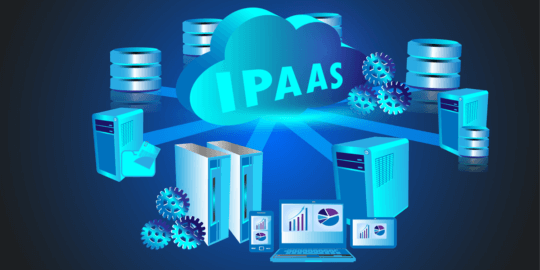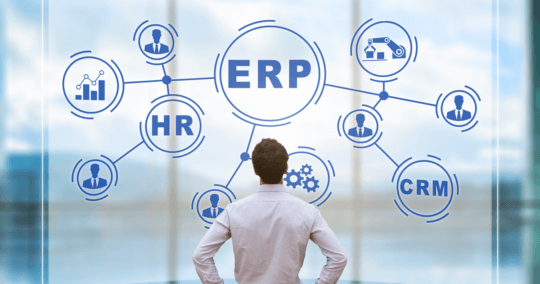iPaaS: Multi-Client Capability and Scalability

With iPaaS, Multi-client capability and scalability open up opportunities for cost savings and improvements in the quality and security of your IT processes. In this part of our blog series, you’ll discover when a system is multi-tenant and how a hybrid integration platform can protect your investments. You’ll also read about the advantages of an iPaaS solution in terms of multi-tenancy and scalability.
In Part I of our blog series, we introduce the hybrid integration platform (HIP) approach and explain how an iPaaS solution can complement your cloud strategy. In Part II, we discuss the benefits of an iPaaS solution in terms of your business continuity management. Part III deals with application integration and explains how it can be orchestrated quickly and easily.
Now, here is the third reason why iPaaS should be the heart of your cloud strategy:
Ensure Multi-Client Capability and Scalability with iPaaS
Like other cloud services, iPaaS offers typical cloud features like multi-client capability and scalability that provide companies additional opportunities for cost savings as well as increased quality and security. For example, through the skillful use of clients, the availability of applications, processes and technologies can be increased by putting together and fine-tuning the best combination of on-premises and cloud resources for the company. For example, new processes and new technologies such as IoT can be safely tested via a test client and then successfully integrated. Furthermore, the company can assess its own user groups’ proficiency levels, and those of external specialists in the same way without risk.
Multi-Client Capability: Transferable Processes and Workflows
A system is multi-client capable if several organizational or legal units can use the solution simultaneously without “getting in each other’s way”. With an iPaaS solution, the following two aspects must be differentiated: First, the simplified multi-client capability for software, meaning that iPaaS supports and simplifies the connection of multi-client application software, and second, the multi-client capability of the iPaaS software itself.
With multitenant application software, a single instance can serve thousands of customers or clients simultaneously and share resources of the iPaaS environment. This single instance also serves as a central point for updates and changes, so minor adjustments don’t require extensive rollouts across the enterprise. This can significantly reduce IT spending and further lower the total cost of ownership.
In contrast, the multi-client capability of the iPaaS software itself can be used to cleanly separate processes within an HIP solution without having to build a separate “physical” environment for each use case. It is up to the customer and their specific business model whether to use the logical separation via clients to separate different business areas and their integration scenarios from each other, or simply to separate development, test and production environments. The processes and workflows initially created by the customer in the development environment can be reused largely unchanged in the test and production environment. This saves time and money. Because everything – including users and user groups – is managed by a central instance that uses the same standards, these processes are largely transferable. The processes and workflows can therefore be transferred from one business area to another using the same basic pattern. This also benefits subsidiaries and partners. The user interface and basic configurations are the same and are largely carried out automatically. Similarly, corresponding updates and upgrades only have to be imported once centrally by the iPaaS provider.

Scalability: HIP ensures investment protection
Scalability is the ability of a system to seamlessly increase and decrease resources according to current needs. Most often, however, it refers to the ability of the system to grow. In the integration scene, a distinction must be made between load scalability on the one hand and structural scalability on the other:
Load scalability means a constant system behavior over larger load ranges. This means that a system, regardless of the load, does not cause too much delay and that requests can be processed quickly.
Structural scalability, on the other hand, characterizes a system whose software architecture is designed in such a way that it does not significantly impede the increase in the number of objects. Or to put it less technically and in relation to the economic situation of companies: Structural scalability enables companies to achieve capacity and sales growth on the basis of a sustainable software architecture without a corresponding increase in investment and fixed costs. The software architecture of the iPaaS provider must be correspondingly flexible and future-proof and offer companies appropriate investment protection. Think of mergers and acquisitions or the introduction of new business models, for example, which must be handled via the integration platform as the company grows.
Companies that follow a previously defined hybrid integration strategy can protect themselves from costly errors in decision making. For example, IoT technologies often require flexible integration of many devices and sensors that collect and process data. A large number of new devices and software solutions often have to be connected within a short time. In addition, low latency is often important – the system must be able to access the necessary resources and exchange data at short notice. Here you can see how important it is to proceed in a strategically coordinated manner when selecting technologies and service providers – the hybrid integration platform approach makes this possible.
Highly secure operation by SEEBURGER
With its Hybrid Integration Platform, SEEBURGER supports essential requirements such as a central administration of user groups, and the provisioning of integration patterns for different integration approaches, such as EDI, API and IoT. Based on its iPaaS solution, SEEBURGER also takes over the operation of this platform, guarantees its highest availability and manages the platform and the underlying infrastructure while adhering to strict compliance requirements.
Read the complete story in E3 Magazine
Thank you for your message
We appreciate your interest in SEEBURGER
Get in contact with us:
Please enter details about your project in the message section so we can direct your inquiry to the right consultant.
Written by: Holger Fiederling
Holger Fiederling has been working for SEEBURGER since 2008 and initially worked as a product manager for SEEBURGER B2B-Solutions. Since 2014, he has been responsible for pre-sales and business development for the SEEBURGER Cloud. His focus is on the creation of new, innovative solutions and services, which are oriented towards the requirements of the customers, always with the aim of maximizing the latest opportunities for the customers. In doing so, he attaches great importance to taking into account the experience gained from all of his international customer projects. After starting his career in the automotive industry, Holger Fiederling worked for two large management consultancies in the SAP environment and in the area of hosting and outsourcing of IT processes. To compensate for this, he spends a lot of time on his mountain bike or skiing in winter.





